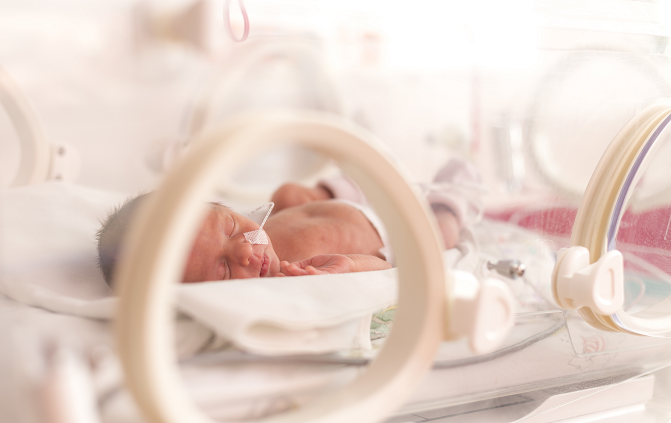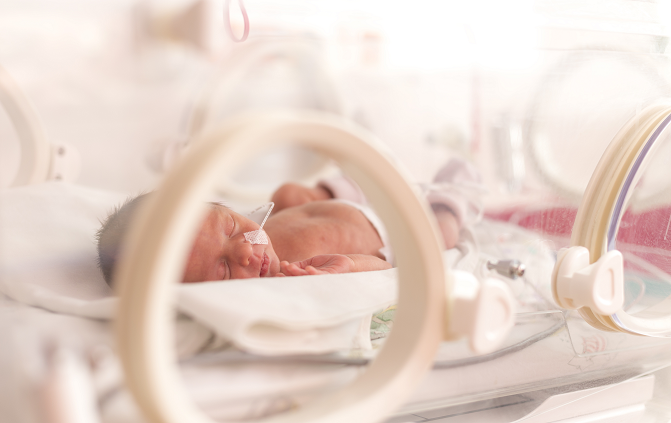
This peer reviewed commentary was originally published in:
NEONATOLOGY TODAY (https://www.neonatologytoday.org/web)
Volume 15 Issue 11 Pages 11-16
Release date: November 2020
Author: Mitchell Goldstein MD
Division of Neonatology, Department of Pediatrics,
Loma Linda University School of Medicine
Reprinted with permission.
Introduction
Breastfeeding is proven to reduce the risk of a wide range of illnesses and conditions. Compared with formula-fed children, children that receive breastmilk have a reduced risk of ear, skin, stomach, and respiratory infections, diarrhea, sudden infant death syndrome, and necrotizing enterocolitis. In the longer term, breastfed children have a reduced risk of obesity, diabetes, asthma, and childhood leukemia. (1-3) Premature infants benefit even more from human milk. Decreases in cardiovascular disease and hypertension have been seen in ex-premature infants not exposed to cow’s milk in the first few weeks of life. (4-7) For preterm infants born at less than 1,250 grams, the evidence of the benefits of an exclusive human milk diet, devoid of foreign protein (defined as mother’s milk and/or pasteurized donor milk plus a human milk-based fortifier), is conclusive. Numerous studies (3, 6, 8-10) published in major journals examine the difference between feeding premature infants who receive cow milk versus human milk. The studies show a clear and direct relationship between exposure to cow milk-based nutrition and an increased risk of significant morbidities of prematurity.
These studies demonstrate the following benefits for infants receiving an exclusive human diet compared to those exposed to cow milk-based products: (5-7, 9-18)
- Significant reductions in the incidence of necrotizing enterocolitis (NEC)
- Decreased length of hospital stays
- Reduction of the number of total parenteral nutrition (TPN) days
- Reduced feeding intolerance
- Improved weight and length velocity with the proper feeding protocol and the use of a human milk- based fortifier
- Lower mortality
- Reduced incidence of late-onset sepsis
- Reduced incidence of retinopathy of prematurity
- Reduced incidence of bronchopulmonary dysplasia (BPD)
In recent years, the use of donor human milk and human milk-derived products has dramatically increased. With a mountain of growing evidence that human milk is best for all babies – and especially critical for premature infants spending time in the Neonatal Intensive Care Unit (NICU) – demand for donor human milk has grown year after year. The Human Milk Banking Association of North America (HMBANA), the largest distributor of pasteurized donor human milk, published in their annual report that the distribution of pasteurized donor milk has increased sevenfold since 2000. HMBANA distributed less than half a million ounces in 2000; In 2019, close to 7.4 million ounces were distributed. (19) Donor human milk is a standard of care in approximately 90% of the level 3 and 4 NICUs across the country. (20) This is an undoubtedly positive trend, with dozens of studies showing the benefits of keeping premature infants on a diet of strictly human milk and not risking exposure to foreign proteins. This trend has saved countless lives and reduced the cost of care for these vulnerable infants while sending them home to their families even sooner. (12, 13, 21) One studied demonstrated a $15,750 savings per day, and 9 fewer days on TPN. (12, 13)
Incremental costs in these fragile infants can substantially increase the cost of NICU hospitalization. Aggregate (of co-morbidities and interventions) costs include:
- Surgical NEC $198,040
- Medical NEC $ 74,004
- Late onset sepsis $10,055
- BPD $31,565
- ROP requiring surgery $35,749
- PDA $49,457
However, one critical component has received very little attention with this growing trend: the safety of donor human milk and human milk-derived products and the milk banks that sell them. Unless the milk is processed under intense scrutiny, human milk is at risk of viral and bacterial contamination. What every parent and/or provider needs to know, especially as donor human milk becomes a more common standard of care, is that at present, there is no uniform, minimum set of safety standards, quality protections, or oversight for these products, regardless of from what milk bank they originate.
Click here to continue reading full text.
Click here for references. References also included at end of full text.

